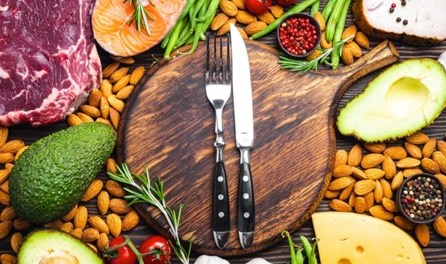As a society, people are increasingly conscious of the types of food as well as consume and the effect they have on weight and health. Nowadays and more people are following a lot of diet plans in order to manage their weight. Among all the popular diet, ketogenic or keto diet is considered as one commonly followed plan that shares some features along with other well-known diets such as Atkins as well as low-carb diets. Like all diets, the keto diet guide also provides guidance on what can or cannot be consumed.
What is the Ketogenic Diet?
Firstly, it is essential to keep in mind that the ketogenic diet is characterized by the consumption of low-carb, high-fat foods. Moreover, as a consequence of eating such foods, experience weight loss can be extremely beneficial for the people who are aiming in order to manage their weight.
It occurs as a result of the dramatic reduction in carbohydrate intake, that is to be replaced by fats instead. The reason is, because of which the body goes into ketosis, that is a natural metabolic state. In this way, the body becomes more efficient in burning fat for energy, it is also thought for converting ketones within the liver into energy that can be used to power the brain.
How Does Ketosis Burn Fat?
In a state of ketosis, the glucose level of body become too low for normal fat oxidation as well as are unable to supply glucose to the central nervous system. It is essential to know that the CNS cannot use fatty acids as a source of energy and free fatty acids cannot cross the blood-brain barrier (BBB).
However, one such source is ketone bodies such as acetoacetate, β-hydroxybutyrate as well as acetone that are specifically produces through ketogenesis which occurs in the liver, within the mitochondrial matrix. Keep in consideration that the ketone bodies are a vital source of energy when the body is fasting and if there is also shortage of carbohydrates.
Best Foods to Eat on the Keto Diet
Almost all the followers of the ketogenic diet are limited to 20 to 50 grams of carbohydrates per day that is roughly equivalent to one large potato as we can also say that half a kilogram of vegetables.
In order to remain within this allowance, there are foods that are recommended which are lower in carbohydrates. It is still down to the individual in order to avoid the overconsumption of any food, they are recommended or not, as too many carbohydrates that may interfere with the development of ketosis. Some of the foods are also avoided to the people following a Candida diet.
Fish and Seafood
Fish and seafood are allowed on the ketogenic diet. Along with this, these foods are also rich in B vitamins and potassium as well as also quite low in carbohydrates.
Vegetables
Overconsumption of starchy vegetables is also avoided on the keto healthy diet. On the other hand, non-starchy vegetables are recommended such spinach, Brussels sprouts or kale. According to the recent researches, it has been suggested that eating such foods is directly associated with a reduction in the risk of developing cancer and heart disease. Furthermore, low-carb vegetables are a good substitution for other high-carb foods.
Avocados
We all know that the popularity of avocados has increased over recent years with a lot of considering that is a superfood alongside kale. Along with the fact that it is containing several vital vitamins, avocados contain potassium too. It is also thought that the consumption of foods rich in potassium also assist in the body’s transition into ketosis.
Despite the many health benefits of fruit, there is reported an issue with some fruits on the keto diet. It is essential to keep in mind that grapes and bananas contain high quantities of carbs. 1 cup of grapes has 26 grams and a medium banana, 24 grams of carbohydrate.
